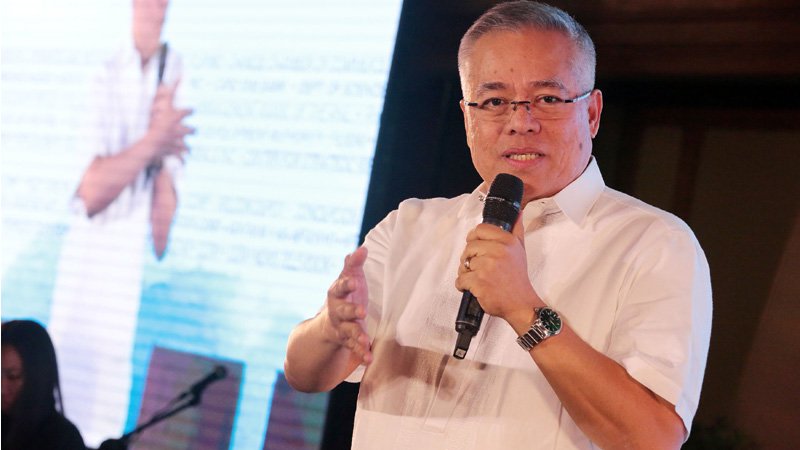
Trade and Industry Secretary Ramon Lopez says some countries in the RCEP want as much as 100 percent of tariff lines to be liberalized, while some want it lower than 92 percent. (File photo by GRIG C. MONTEGRANDE / Philippine Daily Inquirer)
The Association of Southeast Asian Nations (Asean) has stood its ground on a target for the trade in goods under the Regional Comprehensive Economic Partnership (RCEP), threatening to reject offers that are either higher or lower than what is “acceptable,” a top official said.
In a press briefing on Monday, Trade and Industry Secretary Ramon Lopez said that the Asean wants to have 92 percent of tariff lines among RCEP countries to be open to the mega trade deal, urging its six free trade agreement (FTA) partners to have “more realistic ambitions.”
This, he said, is because some countries want as much as 100 percent of tariff lines to be liberalized, while some want it lower than 92 percent.
However, these are figures that the Asean could not commit to for various reasons, such as the need to exclude some sensitive products from the deal, and thus, preventing a full tariff inclusion.
When later asked on the sidelines of the briefing if the Asean would not be accepting any offer lower or higher than 92 percent, he said: “Yes.”
He said this following last week’s 49th Asean Economic Ministers (AEM) and other related meetings, which included Sunday afternoon’s fifth RCEP meeting. After the meeting over the weekend, the FTA partners are expected to come up with counteroffers on Sept. 22.
The ongoing trade talks, which would potentially create the world’s largest trade bloc, is participated by the 10 Asean member states along with six FTA partners – Australia, New Zealand, India, Korea, Japan, and China.
RCEP becomes increasingly more important after after a comparatively large trade deal, the Trans-Pacific Partnership (TPP), was deemed dead by many without US participation.
However, according to Lopez, coming up with a consensus with various partners would not be “an easy task,” given that each player has “different stages of development, different objectives, and different ambitions.”
During the latest RCEP meeting, he said that the parties endorsed a document called the “RCEP Key Elements for Significant Outcomes by end of 2017” – a text which he said reinforces the “Asean centrality” of the trade talk.
“The key elements document, basically, was endorsed and put forward by the 10-member Asean countries. In a way, the Asean countries have clarified that this would be the clear parameters that we can negotiate in moving forward,” he said.
“This would be now under the consideration of the FTA partners,” he added. “They will use this now as a guideline as they go back to their respective conutries to seek the mandate of what would be their counteroffers.”
In essence, the document pertains to Asean’s position on different issues in the RCEP negotiations, including tariff liberalization and the timeframe for its implementation.
In the case of tariff liberalization, Asean Deputy Secretary General Lim Hong Hin said that it should build on the current FTAs that Asean already has.
“The guiding principle builds upon the Asean+1 FTAs. Under the Asean+1 FTA, the tariff level inclusion varies from one FTA to another. However, the medium for the Asean+1 FTA is 90.3 percent. If we’re going to build upon the Asean+1 FTA, we need to go higher,” he said.
On the sidelines of the press briefing, Lopez told reporters that there is already an agreement on tariff liberalization for most of the participating countries, including some FTA partners, which would help add pressure other parties to concede.
“What’s good here is there is a convergence among Asean plus a few [FTA] partners,” he said. “At least, it’s not just an Asean. Once you see that more converge, there is pressure [for those that resist.] Hopefully, there would be an acceleration [of the trade talks].”
/atm